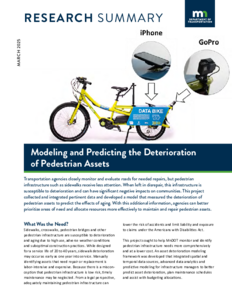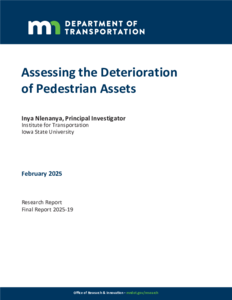Assessing the Deterioration of Pedestrian Assets
Creator
Date Created
2025-02
Report Number
2025-19
Description
Gravel Road Management Tool: How Are You Managing Your Gravel Roads?
Date Created
2019
Report Number
2019RIC03F
Description
Rural Community Transit Strategies: Building on, Expanding, and Enhancing Existing Assets and Programs
Date Created
2023-02
Report Number
2023-08
Description
MN 2050 State of the Infrastructure Survey - Data Book
Date Created
2015-10
Description
MN 2050 State of the Infrastructure Survey - Executive Summary
Date Created
2015-10
Description










